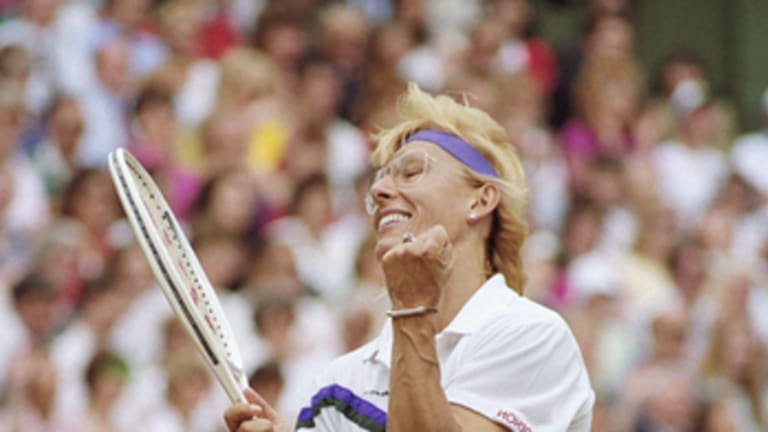This year marks the 50th anniversary of TENNIS Magazine's founding in 1965. To commemorate the occasion, we'll look back each Thursday at one of the 50 moments that have defined the last half-century in our sport.
When Andrea Jaeger walked off the court after losing the 1982 French Open final, she chalked her defeat up to a new problem that the women of the WTA had been having that spring.
“It’s difficult to play three players at once,” she said.
Officially, Jaeger had lost to only one opponent, Martina Navratilova. Newly minted as an American the previous fall, Navratilova had, after nearly a decade of false starts, finally begun to fulfill her vast potential at age 25. That title in Paris, her first, marked the beginning of one of the great extended runs in tennis history. Over the next five years, she would win 13 major titles and reach the finals of six more. Navratilova’s peak would come in 1983, when she compiled an Open era best 82-1 record. No player has ever been as dominant.
What sparked this record run? As a person, Navratilova had become more settled and accepted in 1981. That summer, she had become a U.S. citizen; six years after defecting from Czechoslovakia, she had a home again, and the fans at the U.S. Open that year had cheered her as one of their own. The same year, Navratilova had also, tentatively at first, come out as a lesbian. At least one person close to her, the writer Rita Mae Brown, believed that Navratilova’s public show of strength in herself and her identity helped give her added strength on court in the coming years.
But this career turnaround, perhaps the most stunning in tennis history, couldn’t have happened without the help of the people around her. In the spring of 1981, Navratilova seemed to hit bottom with a 6-0, 6-0 loss to Chris Evert at Amelia Island. In reality, it was a new beginning. On her way to defeat, she caught a glimpse of blond hair in the audience. After the match, the blonde in question introduced herself.

